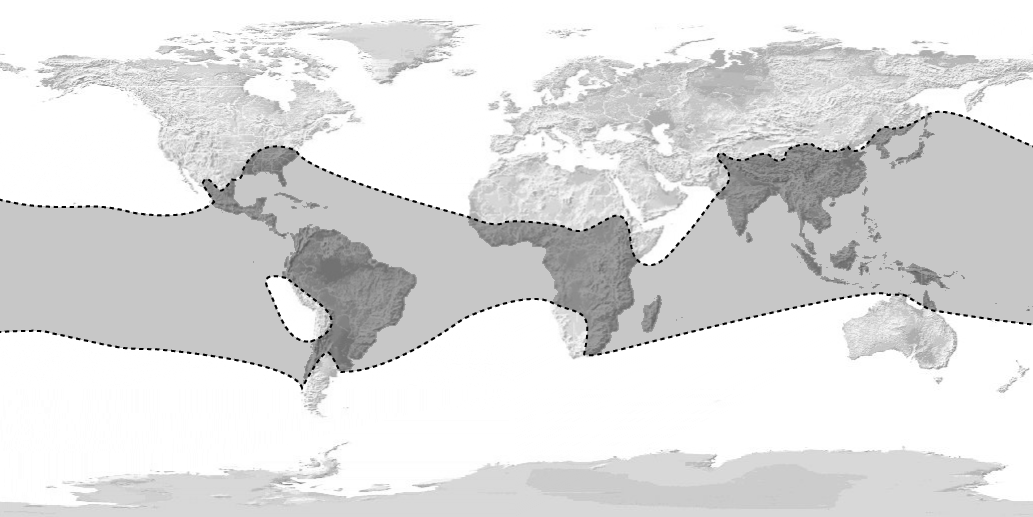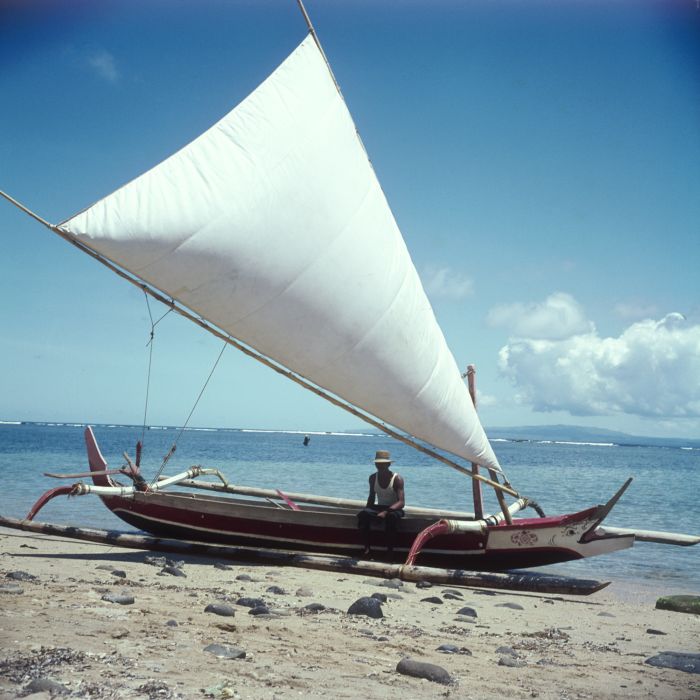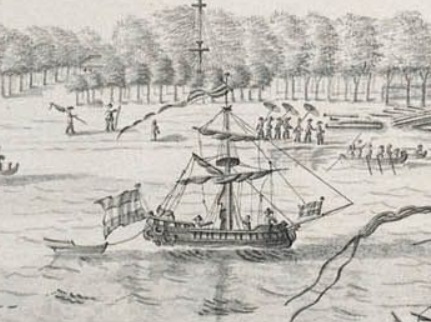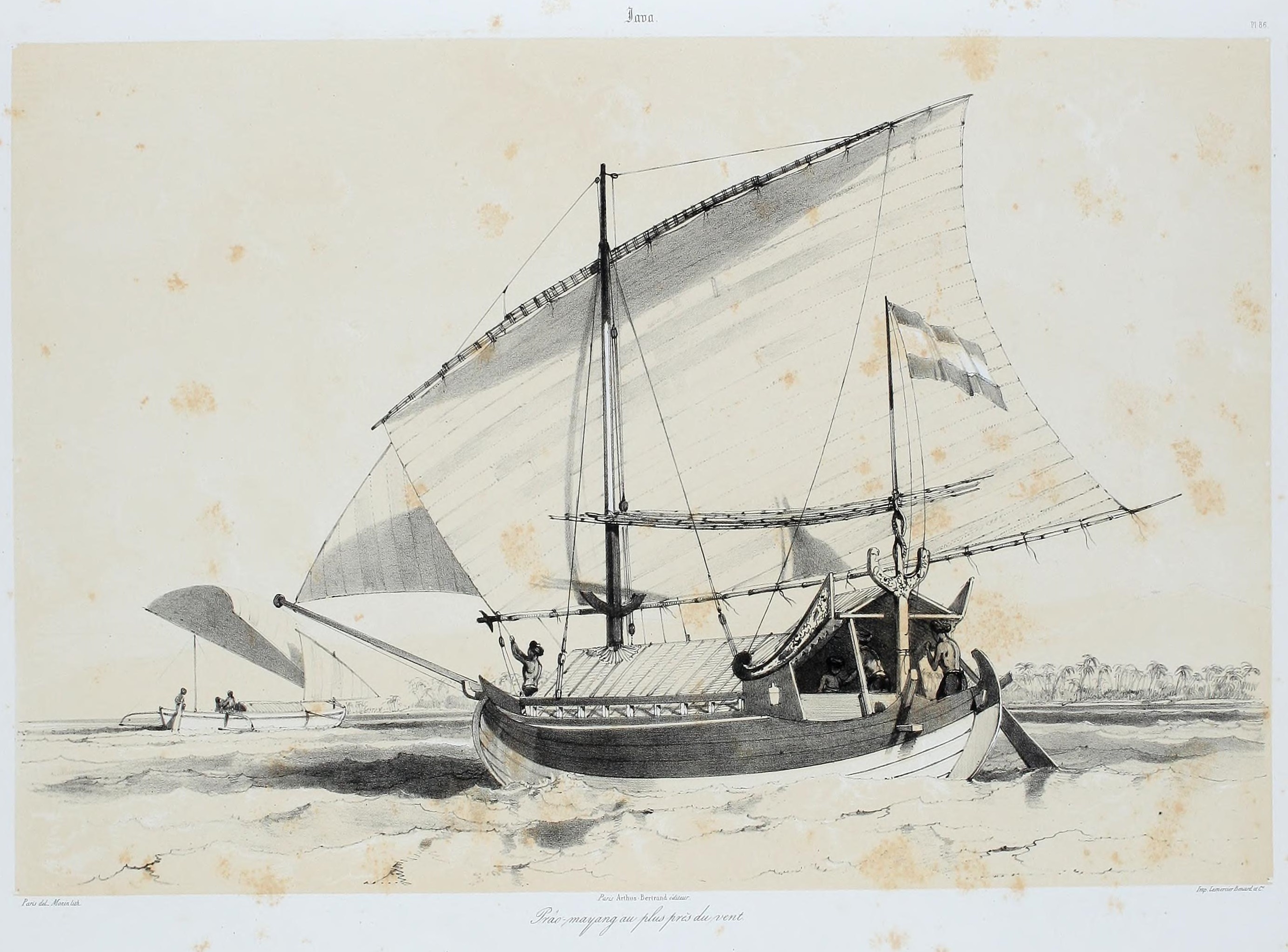|
Mayang (boat)
Perahu Mayang or simply mayang is a type of fishing boat from Java, Indonesia. This type of boat is used mainly for fishing and trading. Historically, this indigenous vessel is also favored by European skippers and private merchants for trading in East Indies: 50% of them were using mayang and pencalang. It is mostly used in northern coast of Java. The major production site is in Rembang, Central Java. Etymology The name mayang comes from ''payang'' (a type of seine) used by local fishermen. Thus the name can be translated as "using ''payang''". Description Major portion of the mayang hull is built using teak wood. The hull shape is broad, flat-bottomed with a pronounced bow and stern. It is deckless, but may have a covered "house" in the middle of the boat. Mayang are also built with a watertight bulkhead. In the 18th century, a Mayang is described as having a crew of 6 or 9 and is 12.2 to 15 metres long; with a 7.24 tonne burthen. A boat from 1850 had a beam of 3 m, a len ... [...More Info...] [...Related Items...] OR: [Wikipedia] [Google] [Baidu] |
Malay Proas
Malay may refer to: Languages * Malay language or Bahasa Melayu, a major Austronesian language spoken in Indonesia, Malaysia, Brunei and Singapore ** History of the Malay language, the Malay language from the 4th to the 14th century ** Indonesian language, the official form of the Malay language in Indonesia ** Malaysian Malay, the official form of the Malay language in Malaysia * Malayic languages, a group of closely related languages in the Malay Archipelago * Malay trade and creole languages, a set of pidgin languages throughout the Sumatra, Malay Peninsula and the entire Malay archipelago * Brunei Malay, an unofficial national language of Brunei distinct from standard Malay * Kedah Malay, a variety of the Malaya languages spoken in Malaysia and Thailand * Sri Lanka Malay language, spoken by the Malay race minority in Sri Lanka * Songkhla Malay, variety of Malay spoken in Songkhla province, Thailand Race and ethnic groups * Malay race, a racial category used in the late 19t ... [...More Info...] [...Related Items...] OR: [Wikipedia] [Google] [Baidu] |
Bamboo
Bamboos are a diverse group of evergreen perennial flowering plants making up the subfamily Bambusoideae of the grass family Poaceae. Giant bamboos are the largest members of the grass family. The origin of the word "bamboo" is uncertain, but it probably comes from the Dutch or Portuguese language, which originally borrowed it from Malay or Kannada. In bamboo, as in other grasses, the internodal regions of the stem are usually hollow and the vascular bundles in the cross-section are scattered throughout the stem instead of in a cylindrical arrangement. The dicotyledonous woody xylem is also absent. The absence of secondary growth wood causes the stems of monocots, including the palms and large bamboos, to be columnar rather than tapering. Bamboos include some of the fastest-growing plants in the world, due to a unique rhizome-dependent system. Certain species of bamboo can grow within a 24-hour period, at a rate of almost an hour (equivalent to 1 mm every ... [...More Info...] [...Related Items...] OR: [Wikipedia] [Google] [Baidu] |
Ship Types
A ship is a large watercraft that travels the world's oceans and other sufficiently deep waterways, carrying cargo or passengers, or in support of specialized missions, such as defense, research, and fishing. Ships are generally distinguished from boats, based on size, shape, load capacity, and purpose. Ships have supported exploration, trade, warfare, migration, colonization, and science. After the 15th century, new crops that had come from and to the Americas via the European seafarers significantly contributed to world population growth. Ship transport is responsible for the largest portion of world commerce. The word ''ship'' has meant, depending on the era and the context, either just a large vessel or specifically a ship-rigged sailing ship with three or more masts, each of which is square-rigged. As of 2016, there were more than 49,000 merchant ships, totaling almost 1.8 billion dead weight tons. Of these 28% were oil tankers, 43% were bulk carriers, and 13% were ... [...More Info...] [...Related Items...] OR: [Wikipedia] [Google] [Baidu] |
Sailing Ships
A sailing ship is a sea-going vessel that uses sails mounted on masts to harness the power of wind and propel the vessel. There is a variety of sail plans that propel sailing ships, employing square-rigged or fore-and-aft sails. Some ships carry square sails on each mast—the brig and full-rigged ship, said to be "ship-rigged" when there are three or more masts. Others carry only fore-and-aft sails on each mast, for instance some schooners. Still others employ a combination of square and fore-and-aft sails, including the barque, barquentine, and brigantine. Early sailing ships were used for river and coastal waters in Ancient Egypt and the Mediterranean. The Austronesian peoples developed maritime technologies that included the fore-and-aft crab-claw sail and with catamaran and outrigger hull configurations, which enabled the Austronesian expansion into the islands of the Indo-Pacific. This expansion originated in Taiwan BC and propagated through Island Southeast Asi ... [...More Info...] [...Related Items...] OR: [Wikipedia] [Google] [Baidu] |
Boats
A boat is a watercraft of a large range of types and sizes, but generally smaller than a ship, which is distinguished by its larger size, shape, cargo or passenger capacity, or its ability to carry boats. Small boats are typically found on inland waterways such as rivers and lakes, or in protected coastal areas. However, some boats, such as the whaleboat, were intended for use in an offshore environment. In modern naval terms, a boat is a vessel small enough to be carried aboard a ship. Boats vary in proportion and construction methods with their intended purpose, available materials, or local traditions. Canoes have been used since prehistoric times and remain in use throughout the world for transportation, fishing, and sport. Fishing boats vary widely in style partly to match local conditions. Pleasure craft used in recreational boating include ski boats, pontoon boats, and sailboats. House boats may be used for vacationing or long-term residence. Lighters are use ... [...More Info...] [...Related Items...] OR: [Wikipedia] [Google] [Baidu] |
Perahu Payang
Perahu payang or simply payang is a traditional Malay open fishing boat. They are usually found in Terengganu, and to a lesser extent, Kelantan, Pahang, and Johor coasts. A few examples normally come down to Singapore to operate during the period of the north-east monsoon in the South China Sea. Etymology The name perahu payang comes from ''payang'' (a type of seine) used by local fishermen. Perahu is Malay word for boat and/or ship. Thus the name can be translated as "a boat that use ''payang''". Description Perahu payang has a crew of 15–20 men when fishing. It carries a net which the name derives, the ''pukat payang''. The perahu payang ranges in length from about 33–45 feet (10–13.7 m) with a beam of 6 to more than 7 feet (1.8–2.1 m). The bow and stern are built up fantastically giving a most striking appearance. These ends, the keel and bottom planks are built of chengai wood, the top planks usually being serayah wood. The upper strakes of Malay boats, ''timbau'', ... [...More Info...] [...Related Items...] OR: [Wikipedia] [Google] [Baidu] |
Jukung
A jukung or kano, also known as cadik is a small wooden Indonesian outrigger canoe. It is a traditional fishing boat, but newer uses include "Jukung Dives", using the boat as a vehicle for small groups of SCUBA divers. The double outrigger jukung is but one of many types of Austronesian outrigger canoes that use the crab claw sail traditional throughout Polynesia. Whilst this sail presents some difficulties in tacking into the wind, actually requiring to jibe around, a jukung is superb in its reaching ability and jibe-safe running. They are usually highly decorated and bear a marlin-like prow. People in Kalimantan also named their boat Jukung. It is used for transport in daily activities such as going to the office, to school, or shopping in pasar terapung (The Floating Market, a very famous tourist attraction). Currently there is a modern version of jukung made from High Density Polyethylene (HDPE) pipe in Indonesia. Advertised as unsinkable, the main body is made of a closed ... [...More Info...] [...Related Items...] OR: [Wikipedia] [Google] [Baidu] |
Kakap (boat)
Kakap is a narrow river or coastal boat used for fishing in Malaysia, Indonesia, and Brunei. They are also sometimes used as auxiliary vessels to larger warships for piracy and coastal raids. Etymology The name "''kakap''" comes from Malay word meaning "spy", "scout", "lookout". Thus, the name means "type of boat used for scouting". Description Kakap resemble pangajava but are smaller and lighter. It also uses a mast and rectangular ''tanja'' sail. The boards and planks on the hull are not nailed with iron nail, but are attached using a wooden dowel technique and reinforced with rattan bonds. Larger kakap is able to reach eight meters in length and able to carry 8–10 crews. The kakap jeram's hull is planked and built with frames, made by ''meranti'' (dipterocarp) wood. It has carved figurehead and ornamented sternpost. A washstrake made of bamboo splits sewn together with bamboo withies, and held in position by lashings. A heavy beam is fitted forward and used for winding th ... [...More Info...] [...Related Items...] OR: [Wikipedia] [Google] [Baidu] |
Chialoup
A chialoup (or chaloup) was a type of sloop used in the East Indies, a combination of western ( Dutch) and Nusantaran (Indonesian) technologies and techniques. Many of these "boat-ships" were produced by VOC shipwrights in Rembang and Juwana, where the majority of the workers were local Javanese. Chialoups were used by the Dutch East India Company and private merchant-sailors of western and Nusantaran origin. Description The chialoup sail plan mimics that used in sloops, with a combination of square-rigged and fore-and-aft sails. The boats are usually single-decked with one mast, sometimes with an added mizzen mast. While most such chialoups use a European-style central rudder, some are equipped with two side (quarter) rudders, a characteristic of Nusantaran boats. The length is between 15 and 25 meters, with a cargo bay almost 6 meters long. Depending on the size of the boat, crews run 20 to 40 people, with a typical load capacity of 72 to 144 metric tons. In the ''syahband ... [...More Info...] [...Related Items...] OR: [Wikipedia] [Google] [Baidu] |
Pencalang
Pencalang is a traditional merchant ship from Nusantara. Historically it was called as pantchiallang or pantjalang. It was originally built by Malay people from the area of Riau and the Malay Peninsula, but has been copied by Javanese shipwrights.Liebner, Horst H. (2016). ''Beberapa Catatan Akan Sejarah Pembuatan Perahu Dan Pelayaran Nusantara''. Jakarta: Indonesian Ministry of Education and Culture. By the end of the 17th century this ship has been built by Javanese and Chinese shipbuilders in and around Rembang. However it was a popular choice for Balinese skippers followed by Sulawesian skippers. Etymology The word ''pencalang'' comes from Malay word, which has now been absorbed into Indonesian language, namely ''calang'' and ''mencalang'', which means "to scout", "to recon", and "to peek". Therefore, pencalang can be interpreted as "a boat used for spying" or "recon boat". According to VOC glossarium, the Malay word ''pentjalang'' means "ship that was sent on the lookout", ... [...More Info...] [...Related Items...] OR: [Wikipedia] [Google] [Baidu] |
Proa
Proas are various types of multi-hull outrigger sailboats of the Austronesian peoples. The terms were used for native Austronesian ships in European records during the Colonial era indiscriminately, and thus can confusingly refer to the double-ended single-outrigger boats of Oceania, the double-outrigger boats of Island Southeast Asia, and sometimes ships with no outriggers or sails at all. In its most common usage, the term ''proa'' refers to the Pacific proas which consist of two (usually) unequal-length parallel hulls. It is sailed so that one hull is kept to windward, and the other to leeward. It is double-ended, since it needs to " shunt" to reverse direction when tacking. It is most famously used for the '' sakman'' ships of the Chamorro people of the Northern Marianas, which were known as the "flying proas" for their remarkable speed. In Island Southeast Asia, the term ''proa'' may also sometimes be used, but the terms perahu, prau, prahu, paraw and prow are mor ... [...More Info...] [...Related Items...] OR: [Wikipedia] [Google] [Baidu] |
Anyer
Anyer, also known as Anjer or Angier, is a coastal town in Banten, formerly West Java, Indonesia, west of Jakarta and south of Merak. A significant coastal town late 18th-century, Anyer faces the Sunda Strait. History The town was a considerable port in the 19th century, but was completely destroyed by a 100-foot-high tsunami which was caused by the 1883 eruption of Krakatoa. The present settlement still houses the Cikoneng Lighthouse built by Dutch government two years later as a memorial for the townspeople killed by the eruption. It was also the starting point of the Great Post Road, built by the Dutch in the nineteenth century, which ran around to the eastern tip of Java. Off the coast of Anyer is the island Pulau Sangiang, an uninhabited island with vast areas of untouched jungle. The area is also known for coral formations swarming with tropical fish. Anyer Beach is a tourist attraction with hot swimming water, a hotel and rental of resting sheds, boats, four-wh ... [...More Info...] [...Related Items...] OR: [Wikipedia] [Google] [Baidu] |









